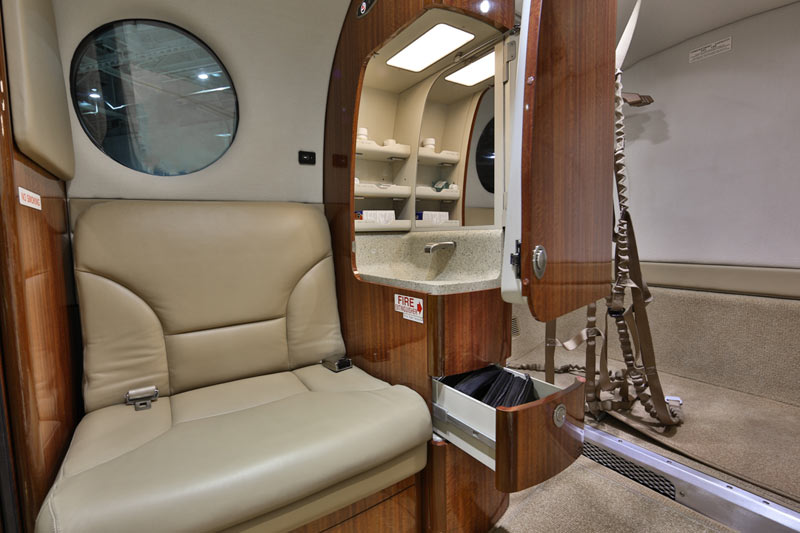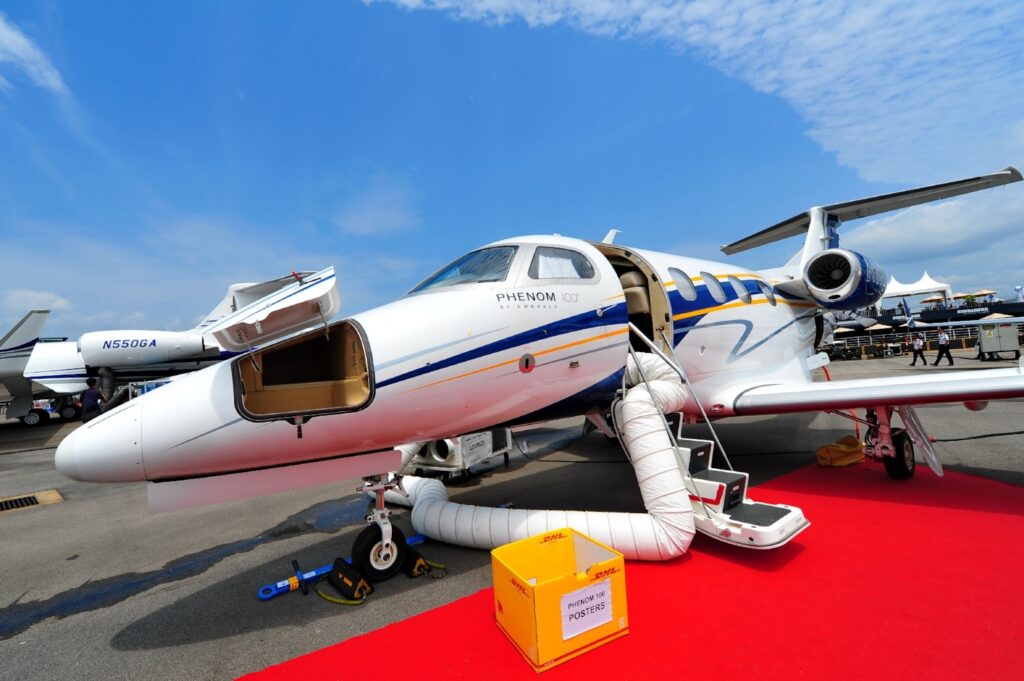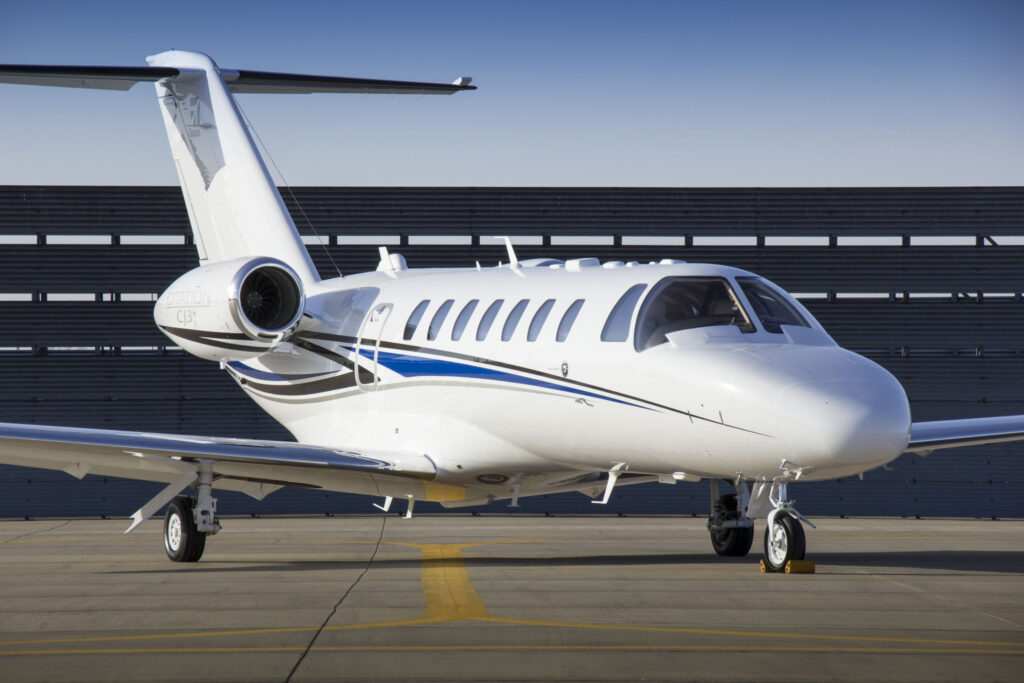Citation V
The Citation V, also known as the Model 560, was created as a “stretched” version of the Citation II. The Citation V, production of which began in 1989, has a cabin that’s about a foot and a half longer than the II’s cabin. It also has upgraded engines and uses a Dual Collins ProLine avionics system.
Equipped with two Pratt & Whitney Canada JT15D5A engines, the Citation V has a normal cruise speed of 387 knots, a range of 1,960 nautical miles, a climb rate of 3,684 feet per minute, and requires approximately 3,647 feet of runway to takeoff and 2,864 to land.
Citation Ultra
In 1993, Cessna announced an updated version of the Model 560, the Citation Ultra. The Ultra comes with upgraded engines and a more advanced Honeywell Primus 1000 EFIS glass cockpit that replaced the V’s round-dial flight instruments with three CRT screens.
The Citation Ultra’s more powerful Pratt & Whitney Canada JT15D-5D give it a normal cruise speed of 419 knots, a range of 1,259 nautical miles and a climb rate of 4,230 feet per minute. It requires 3,422 feet of runway to takeoff and 2,928 to land.
Citation Encore/Encore+
In 1998, Cessna introduced yet another upgraded Model 560 with the Citation Encore. The Encore comes equipped with upgraded engines, a decreased fuel capacity, an increased maximum takeoff weight, improved landing gear, an updated cabin interior and some improvements to its deicing system and braking system. In 2006, the Encore+ model was FAA certified. The Encore+ comes equipped with upgraded, FADEC-controlled engines and a more advanced Collins ProLine 21 avionics system.
The Citation Encore comes equipped with two Pratt & Whitney Canada PW535A engines that give it a normal cruise speed of 419 knots, a range of 1,410 nautical miles and a climb rate of 4,640 feet per minute. It requires approximately 3,822 feet of runway to takeoff and 3,204 to land. The Encore+’s PW535B engines improve its range slightly, even with a decreased fuel capacity, from 1,410 to 1,494, and FADEC slightly improves efficiency, though the rest of its performance specs remain nearly identical.
[ulp id=’ksrvpykbSKmvluGu’]




